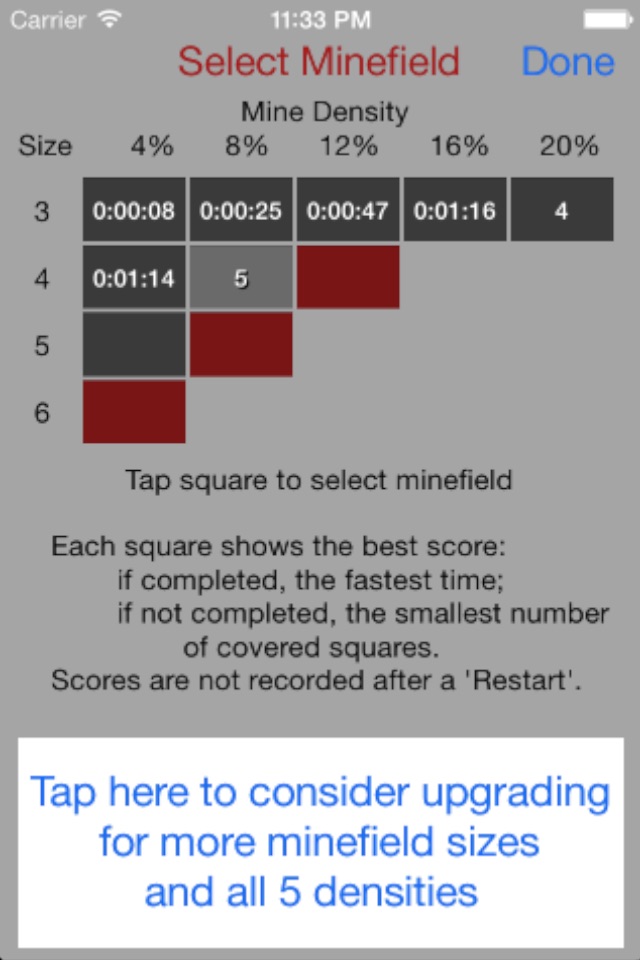
3 Level MineSweeper
3 Level MineSweeper is a multi-level version of the popular game MineSweeper. It is played on 3 square minefields stacked one on top of another.
Mines are hidden under some of the squares on the minefields. You must uncover as many squares as possible but not uncover any of the squares that are hiding a mine. An uncovered square reveals the number of mines that are adjacent to it. An uncovered square is considered adjacent to all of the squares around it that are on its level and also the squares, if any, above and below both itself and also those adjacent squares on its level. For example, an uncovered square in the center of the middle level, is adjacent to 8 squares on its level, 9 squares on the top level and 9 squares on the bottom level. An uncovered square in a corner of the top level, is adjacent to 3 squares on the top level, 4 squares on the middle level and 0 squares on the bottom level.
* A 3D logic puzzle more complex than the original, 2D, single level MineSweeper
* Free unlimited minefields for 11 different combinations of size and mine density
* 4 different sizes (3x3x3, 4x4x3, 5x5x3, 6x6x3)
* 5 different mine densities (4%, 8%, 12%, 16% and 20% - not all densities available for all sizes)
* In App Purchase upgrade adds 4 more sizes (7x7x3, 8x8x3, 9x9x3 and 10x10x3) and includes all 5 mine densities for each size - an additional 29 different combinations of size and mine density.
* Best scores saved and posted on the Game Center
[The reason why 3 Level MineSweeper is a complex logic puzzle (and not a random luck, speed game) is based on the observation that if one uncovered square (A) is adjacent to another uncovered square (B), and all of the squares adjacent to A are also adjacent to B, then the number of mines that are adjacent to B but not adjacent to A is the number revealed on B minus the number revealed on A. A simple application of this general observation is that if A is on the top level and B is on the middle level precisely below A then the number of mines that will be on the bottom level adjacent to B will be the number revealed on B minus the number revealed on A. Other more complex applications of this general observation can be used to solve most minefields. We have found that most minefields, other than minefields with a mine density of 20%, can be solved with only the second and third move being a guess with, at times, an additional 2-1-2 ambiguity at the very end (i.e. a sequence of 2 squares, one of which contains a mine, 1 uncovered square, and then 2 squares, 1 of which contains a mine).]
Shown below:
1) A 5x5x3 minefield after the first move.
2) The same minefield having been solved using multiple applications of the observation above.
3) The Select table showing best scores for minefields
4) A 3x3x3 minefield being solved. The mine marker indicates that a mine must be under the square and the color markers indicate that one mine is hidden under each set of colored squares.
5) A 4x4x3 minefield being solved.



